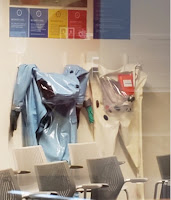The history of DeKalb County has been archeologically traced back as far as the late Ice Age and Indian mounds from the Late Archaic Period have been found that predate the 1567 Spanish claim to the land by thousands of years. When Juan Pardo surveyed the region two significant Indian trade trails already existed and members of the Creek Confederacy the, “People of One Fire”, lived there. Europeans encroached on native land illegally until the 1821 Indian Springs Treaty forced natives to move and more Europeans quickly settled in large numbers. discoverdekalb.com
DeKalb was carved from three other counties and named to honor Johann de Kalb, a Bavarian who changed his name and served in the American Revolutionary War, in 1822. Approximately 10% of Atlanta is located In the county, the most diverse in the South and more than 64 languages are spoken. Just as the population is diverse so too are the shopping, dining, accommodation and activity options. One of the most interesting aspects of discovering DeKalb is uncovering singular cultural and historic connections that resonate in our time.
The 1992, 160,000-sq. ft., Fernbank Museum of Natural History is the natural place to begin your explorations in the exterior Dinosaur Plaza where a family of bronze prehistoric Georgian Hadrosaurs greet you. The museum interprets the development of the earth, prehistoric world, international cultures and state specific displays. Visitors are greeted in the atrium with Giants of the Mesozoic, reproductions of the 47-ft. long Giganotosaurus, the world’s largest carnivorous dinosaur and the 123-ft long plant eating Argentinosaurus accompanied by two flying reptiles. Highlights of the museum include A Walk through Time in Georgia, the fiber-optic ceiling Star Gallery and a 4-story 3D theater.
The adjacent 16-acre WildWoods offers elevated boardwalks with treetop views and leads to Fernbank Forest, the oldest old-growth Piedmont forest in a major US city. Six trails are available to access the 65-acre area and view trees up to 16-stories tall. fernbankmuseum.org
Emory University’s Michael C. Carlos Museum’s roots date back to 1876. The museum’s current collection is one of the most wide-ranging in the nation and thematic galleries are dedicated to major works from Africa, the Americas, Asia, Near East, ancient Egypt, Greece and Rome. Highlights include mummified animal remains and Late Egyptian Period mummies with coffins and Nubian artifacts. Emory focuses on education and research and their outstanding schedule of programs reflects this fact. carlos.emory.edu
Stone Mountain State Park, Georgia’s most visited attraction, is easily one of the most controversial in the country. Geologically the mountain is part of the granite core of a volcano. DeKalb’s first European colonists were met by regional natives who had inhabited the top of the mountain for ceremonial and meeting purposes for 8,000-years. In the 1830s the granite was quarried and in 1847 it was named Stone Mountain. During the Civil War Union General Sherman’s troops bivouacked there and postwar Shermantown a part of Stone Mountain Village, was established at the mountain’s base by emancipated African-Americans.
Activities in the 3,200-acre park include hiking, biking, fishing, golfing, Summit Skyride and Historic Square, reconstructed original GA plantation and farm homes from 1792-1875 including slave cabins. A seasonal laser light show of the carvings now contains Dr. King, imposed at one point, over the generals, and a portion of the “I Have a Dream Speech”. stonemountainpark.com
DeKalb County provides a wonderful way to connect history with modern culture through visits to unique sites and attractions. Enhance your vacation, learn something!















No comments:
Post a Comment